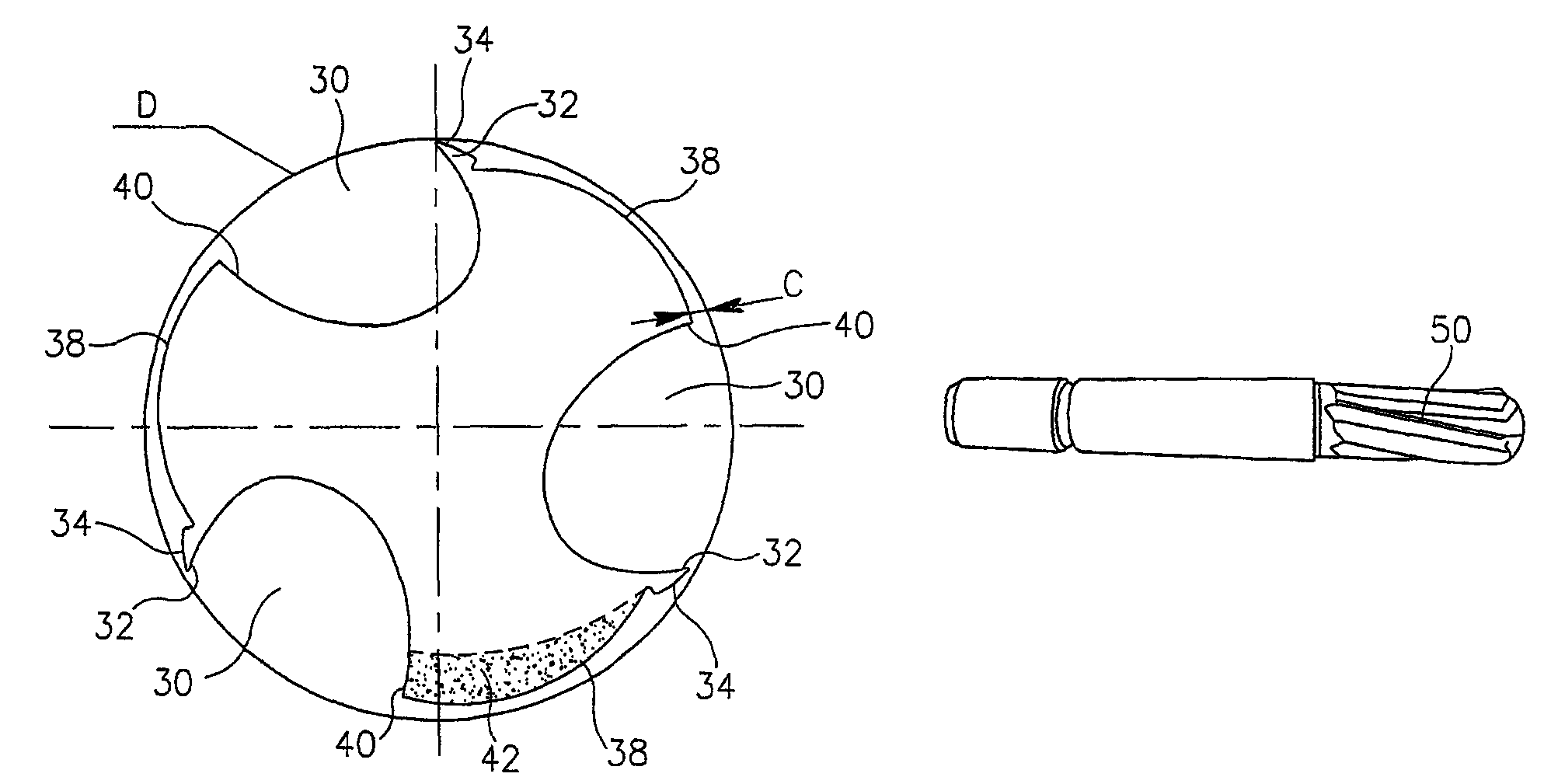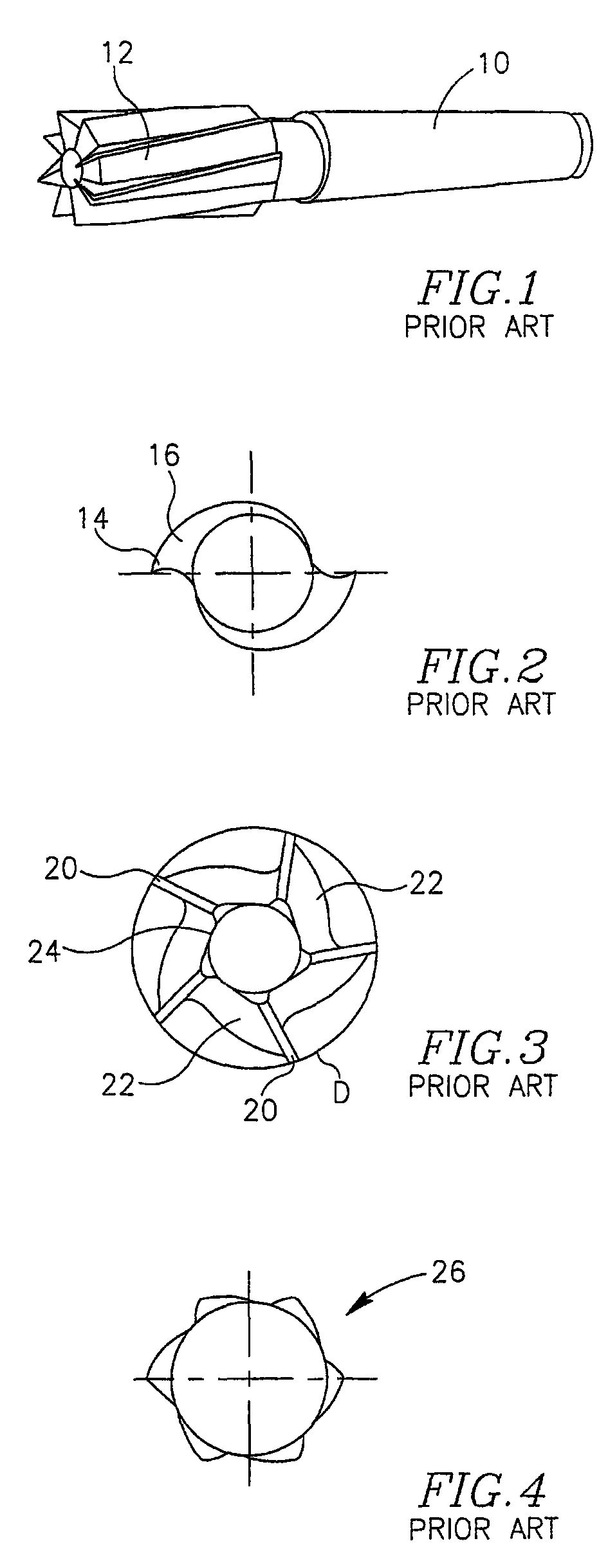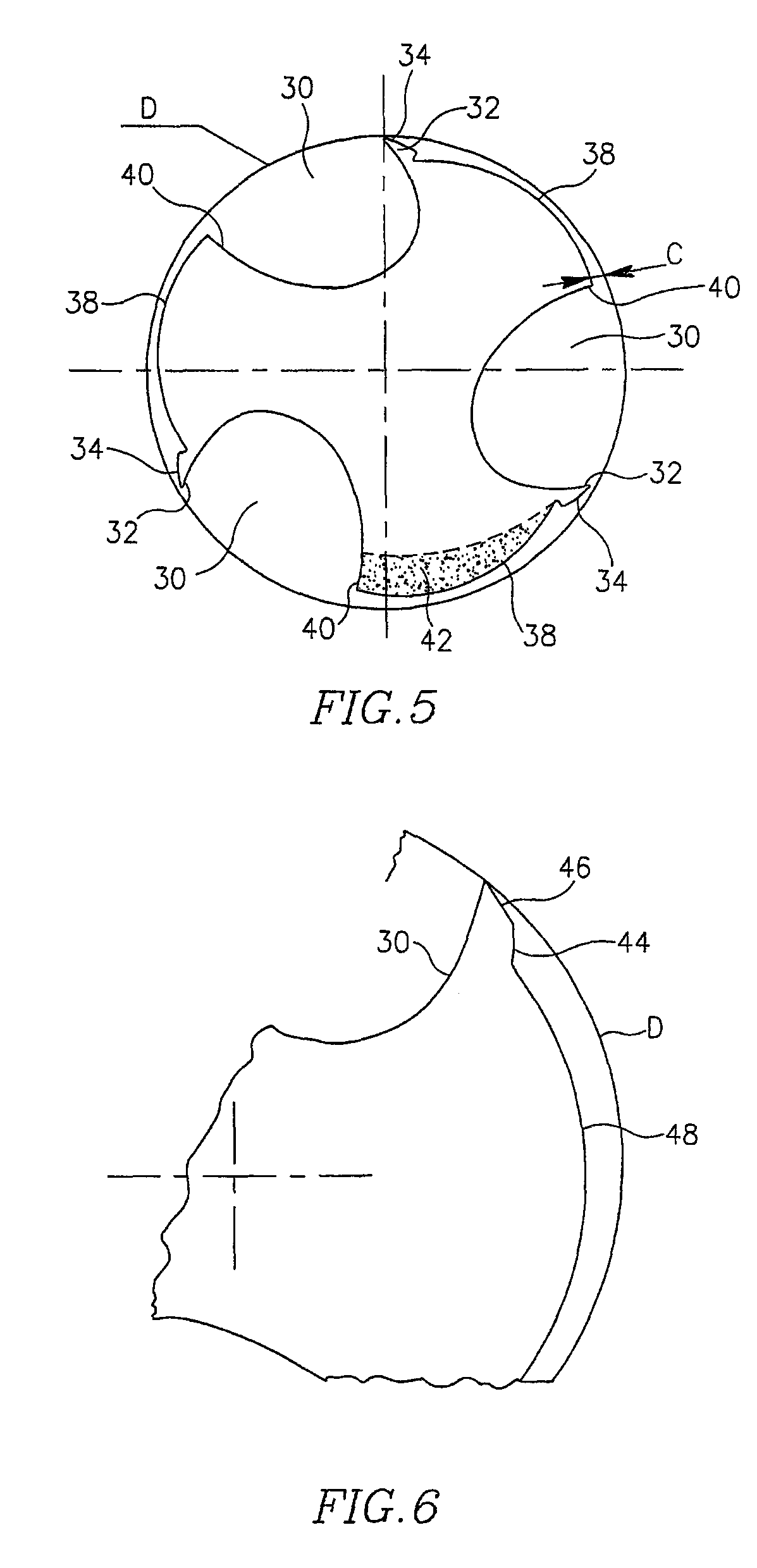End mill and a method of operating an end mill
a technology of end mill and end mill, which is applied in the field of end mill and a method of operating an end mill, can solve the problems of low accuracy loss, inability to achieve high metal removal rate, and insufficient torsional and bending stiffness of end mill, so as to achieve the effect of improving rigidity
- Summary
- Abstract
- Description
- Claims
- Application Information
AI Technical Summary
Benefits of technology
Problems solved by technology
Method used
Image
Examples
Embodiment Construction
[0038]There is seen in FIG. 1 a prior art end mill having a shank or body portion 10 and a cutting portion 12. The end mill seen has 8 teeth and an outside diameter large enough (about 50-80 mm diameter) to allow chip clearance between teeth.
[0039]The prior art cutter seen in FIG. 2 has two teeth 14, each tooth having a backing portion 16 which recedes to the core diameter 18 over about 160°. The C value is about 0.58.
[0040]The prior art end mill seen in FIG. 3 has 5 teeth 20, each having a backing portion 22 which recedes to a position about halfway between the core diameter 24 and the outside diameter D.
[0041]FIG. 4 illustrates a prior art 6-tooth cutter 26. The tooth form 28 has a negative rake as it is intended to machine highly hardened steels, such as more than 55HRc steels (on the Rockwell scale of hardness), the tool 28 being made of sintered carbide.
[0042]Turning now to FIG. 5, there is depicted a 3-tooth end mill configured for improved rigidity according to the present in...
PUM
| Property | Measurement | Unit |
|---|---|---|
| diameter | aaaaa | aaaaa |
| diameter | aaaaa | aaaaa |
| diameter | aaaaa | aaaaa |
Abstract
Description
Claims
Application Information
 Login to View More
Login to View More - R&D
- Intellectual Property
- Life Sciences
- Materials
- Tech Scout
- Unparalleled Data Quality
- Higher Quality Content
- 60% Fewer Hallucinations
Browse by: Latest US Patents, China's latest patents, Technical Efficacy Thesaurus, Application Domain, Technology Topic, Popular Technical Reports.
© 2025 PatSnap. All rights reserved.Legal|Privacy policy|Modern Slavery Act Transparency Statement|Sitemap|About US| Contact US: help@patsnap.com



